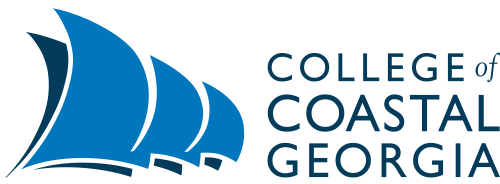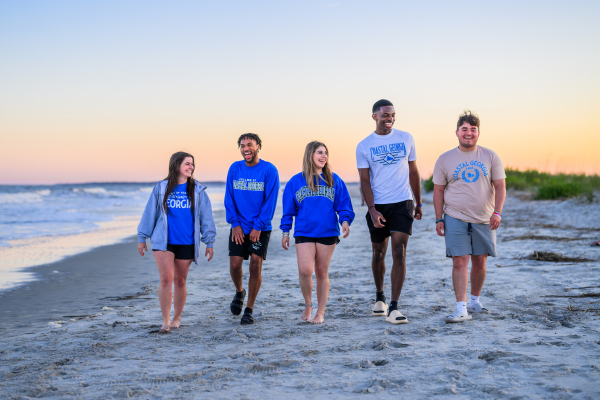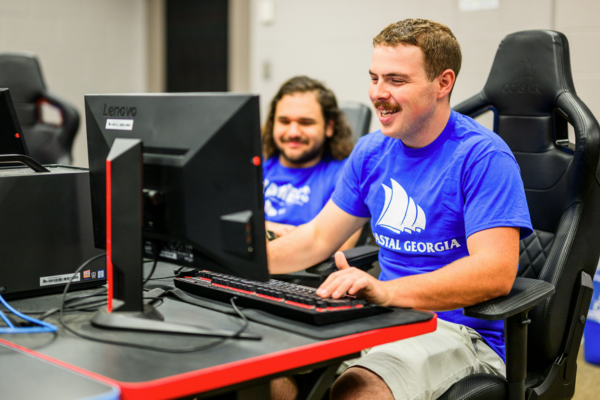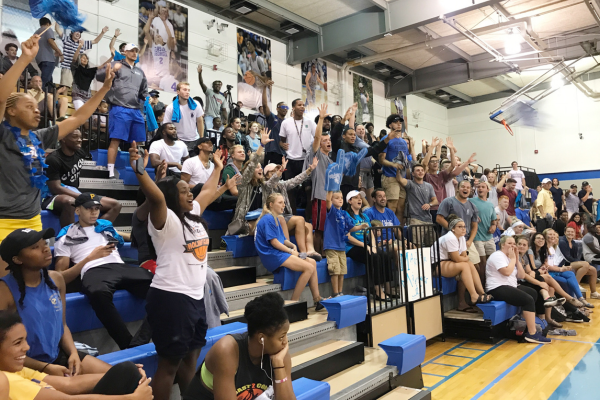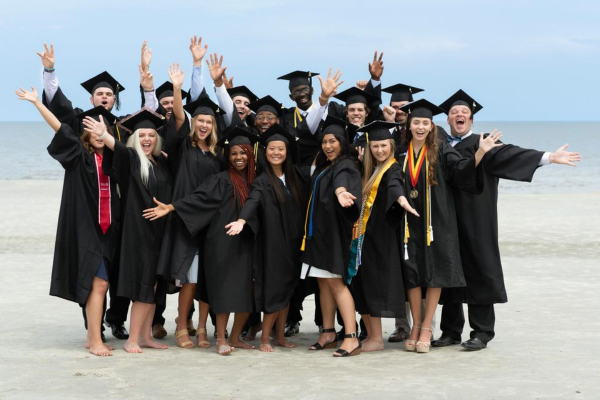College to Host Camden College Fair
Cole Harvey, sophomore, and and Maddie Smith, junior, collect oyster shells with other College of Coastal Georgia students at Cannon’s Point for use in restoring an oyster bed habitat as part of the Living Shoreline project.
Tate Holbrook receives strange looks at the drug store when he purchases a supply of neon colored nail polish.
But what store employees don’t know is, Holbrook isn’t using the purchase to decorate his nails. The brightly shaded paints are used, instead, to mark the shells of salt marsh periwinkle snails for one of his in-field laboratory studies at College of Coastal Georgia.
Every semester, Holbrook — an assistant professor of biology — and the science-based staff at the college map out different course assignments dedicated to using the natural resources in their own backyard. The periwinkle snail project was used to mark a spot on the marine gastropod mollusc’s shells, release the creators back to their natural habitat; they then recapture the critters, study any changes to occur after a set period of time, then analyze the changes in their population size, among other environmental factors.
On Sunday, a group of Holbrook’s students in the school’s Biology Club gathered at Cannon’s Point to undergo another new in-field ecology project. Organized by club members Jennifer Jenkins and Mattie Smith, Holbrook and a team of volunteers bagged oyster shells to help further an effort to restore the oyster bed habitat as part of the Living Shoreline project.
The project, Holbrook said, is being set up near a kayak ramp on Cannon’s Point, which was once a dock. Erosion of the shoreline has left a negative impact on the area. The living shoreline uses oyster shells as an ecologically-friendly approach to restoring buffers, filtering water, and attracting more oysters.
“It’s a win-win,” he said. “A living shoreline is still a relatively new concept, but it is growing in popularity. Having our students participate in this project is one more way we are encouraging their growth in this department. It’s great to see their interest.”
Those projects are just a two of many ecology-based classroom assignments offered through the college’s science department. Other recent agenda items included adopting a stream to monitor a waterway at Cannon’s Point once a month, monitoring changes in plant life and trees in maritime forests, and monitoring invasive species such as the Tree-of-Heaven plants in area habitats.
Tapping into the resources readily available in coastal Georgia has helped the department grow. As it grows, more elective courses such as conservation biology and coastal ecology are becoming more popular, Holbrook said.
“The environment here is a great resource to attracting new students to the college, because they can get real, hands-on experiences in fields like science and marine biology,” he said. “These courses aren’t just about field trips. We go through the scientific process, with collecting data, analyzing findings, developing theories and testing those theories, all as central classroom assignments. They have to dig into the whole process.”
Aside from coastal area’s landscapes that are ready-made for science and ecology-based experiences, the regional community also holds a host of networks to help connect students with internships, new hands-on projects and in-the-field experiences, he said.
The Georgia Department of Natural Resources, Coastal Resources Division, the a
The Brunswick News
ANNA HALL
